by Sally Hara, MS, RD, CSSD, CDE
Preparing for a hike or climb includes more than making sure that you have the right clothing and gear. To really have a successful and enjoyable adventure, you also need to ensure that your body is optimally fueled and hydrated. It’s not that there are food police on the trails, but if you give your body the type and amounts of food and fluids it needs, you will have a much easier and more enjoyable journey.
When considering how to best fuel and hydrate for a hike or climb, there are 3 major times on which to focus. First, what you eat and drink the day or 2 before your event can be the difference between success and failure (or enjoyment vs. bonking). This can determine if you are starting out at the trail head with a “full tank” or one that’s half empty. Second, what you will eat and drink during your hike or climb provides what is needed to keep going with enough energy to enjoy the adventure. In essence, it gives you what you need to “top off the tank” so you don’t run out of gas before you reach your destination. And lastly, what you eat after your hike determines your body’s ability to recover completely and quickly from the wear and tear you just put it through. All three of these are important for health and injury prevention, but also for helping to make your hike or climb as easy and enjoyable as possible.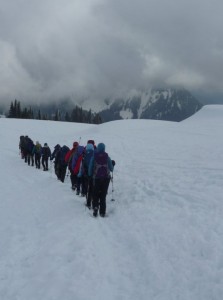
So, what should one eat? The simple answer is “a lot.” However, that isn’t sufficient. The type of food consumed makes a huge difference. This is one instance where a calorie is not a calorie – all are not created equal. The primary (and most efficient) fuel for physical exercise is carbohydrate. Though our bodies will be burning carbs and fat (and perhaps a little protein) for fuel during hiking, when we run out of carbohydrate we will bonk. Our focus then has to be largely on keeping our bodies supplied with enough carbohydrate to keep us going. Getting the right mix of carbs & protein will optimize performance. Likewise starting and staying well-hydrated will help keep you focused and energized, and will help prevent muscle cramping. Below are some examples of what to eat and how to hydrate before, during, and after a hike/climb. .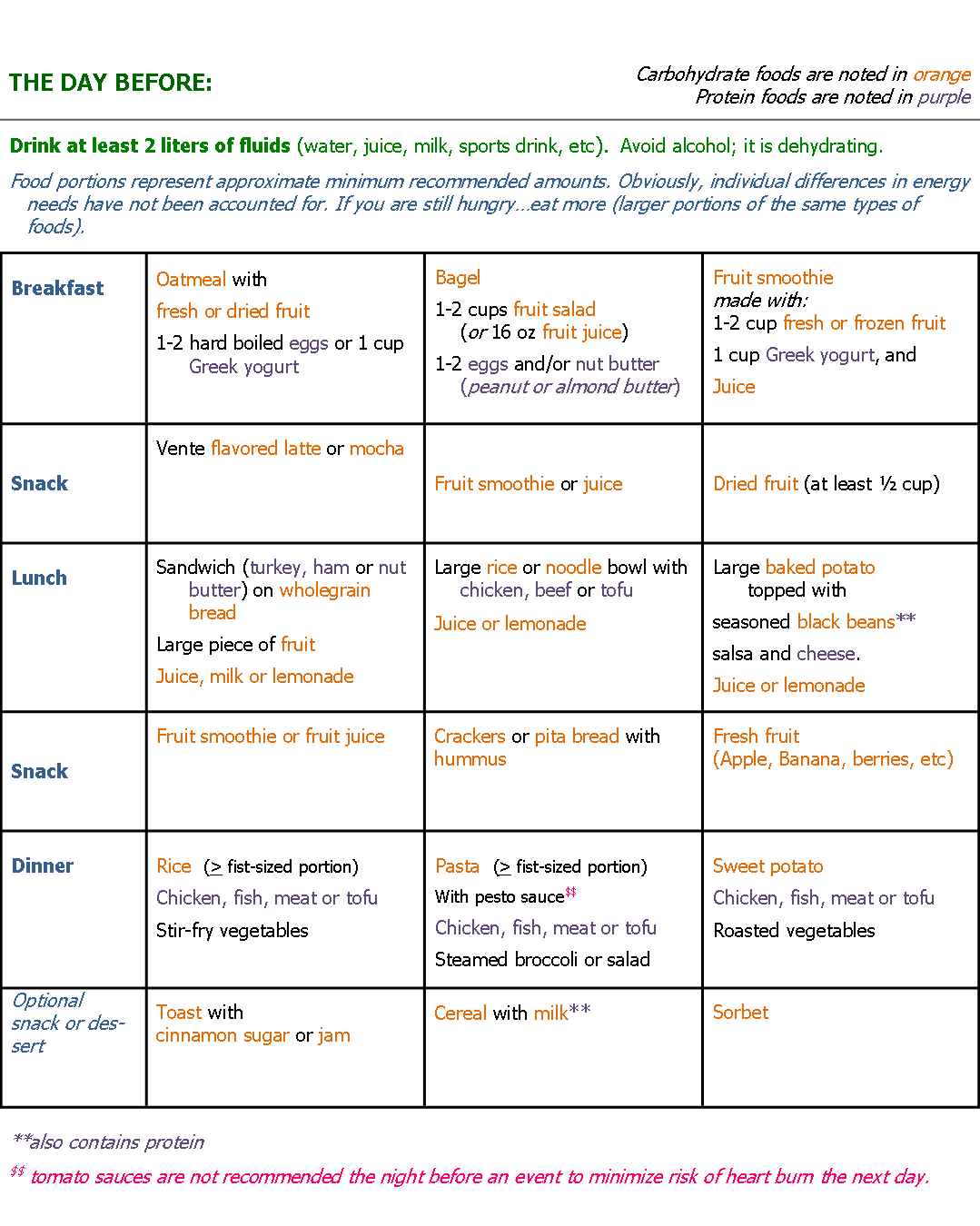
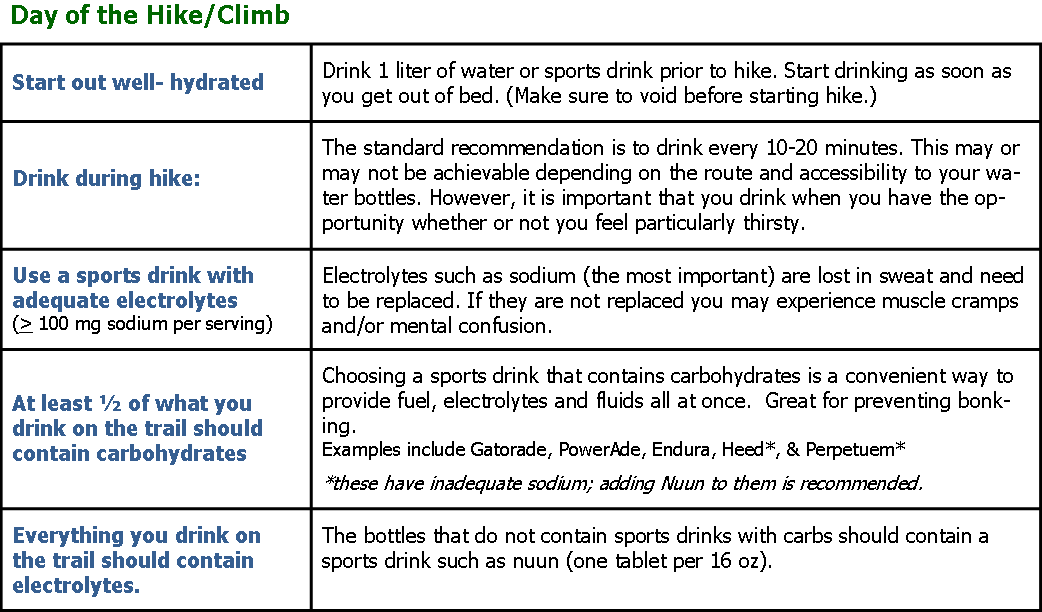
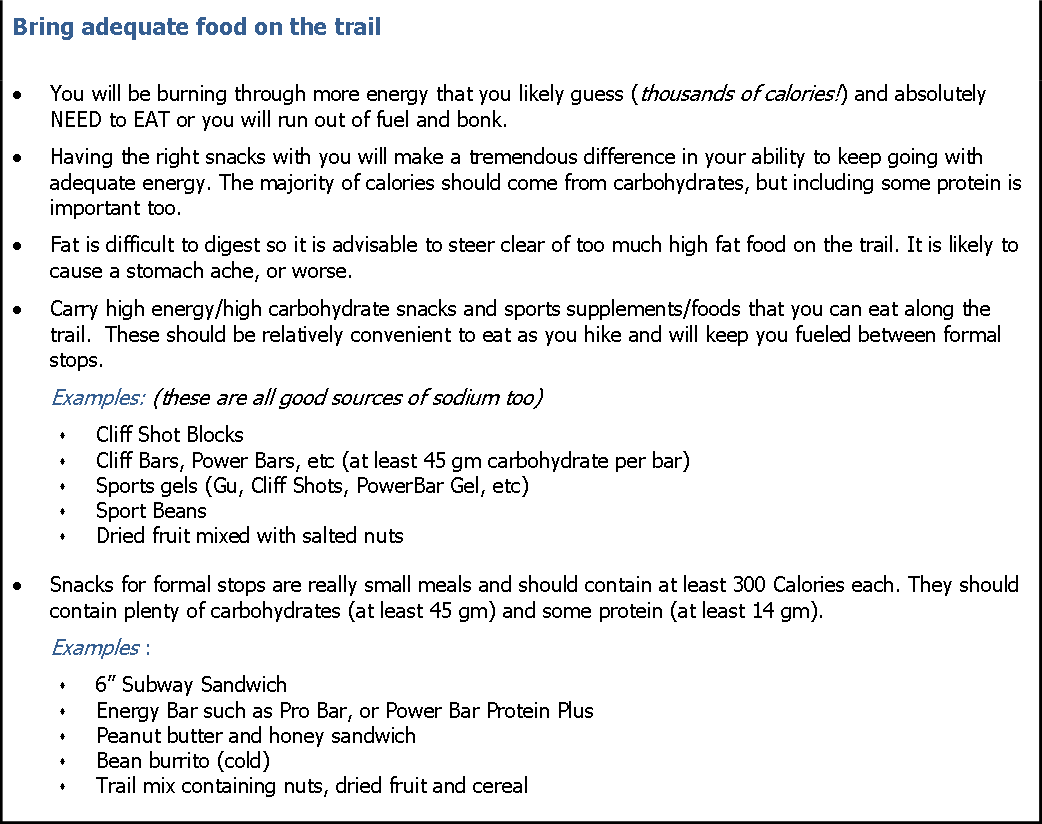
For more information on sports drinks and supplements, see comparison chart for sports drinks and comparison chart of sports bars and gels
About the author:
Sally Hara, MS, RD, CSSD, CDE, is a board-certified specialist in sports dietetics and the Pacific Northwest’s leading authority on sports nutrition. In addition to her two degrees in Nutrition Science, she has a degree in Exercise Physiology. She is also a road cyclist and avid outdoor fitness enthusiast.
Sally is a contributing author to Sports Nutrition: A Practice Manual for Professionals, 4th ed, and assisted writing the nutrition chapter of Fit by Nature: The AdventX Twelve-Week Outdoor Fitness Program. As an expert in sports nutrition and diabetic athletes, Sally has also served as a peer reviewer for numerous books and other publications; and is an acclaimed public speaker.
Sally Hara is the owner of ProActive Nutrition, a private nutrition practice in Kirkland, WA; and serves as a nutrition coach for adventX, a Seattle based -company dedicated to outdoor fitness training and adventures. Helping athletes of all levels enhance their performance and enjoyment of sport and fitness is one of Sally’s passions. Sally can be contacted at sally@ProActivenutrition.net.

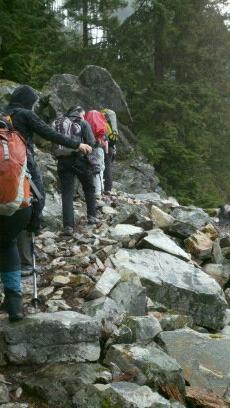
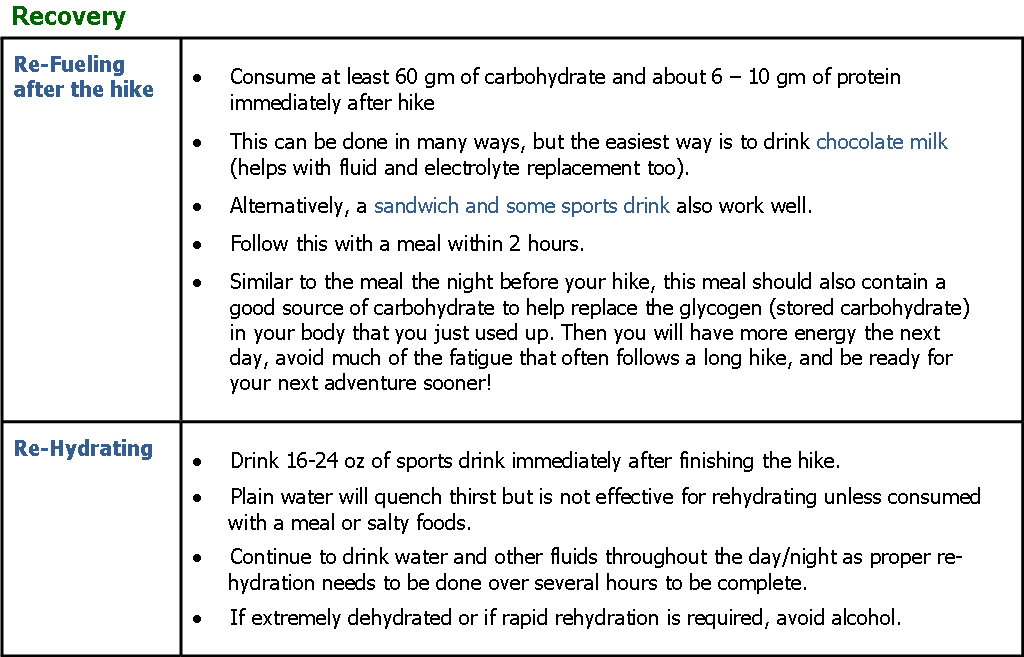

Thanks for the share!
Nancy.R